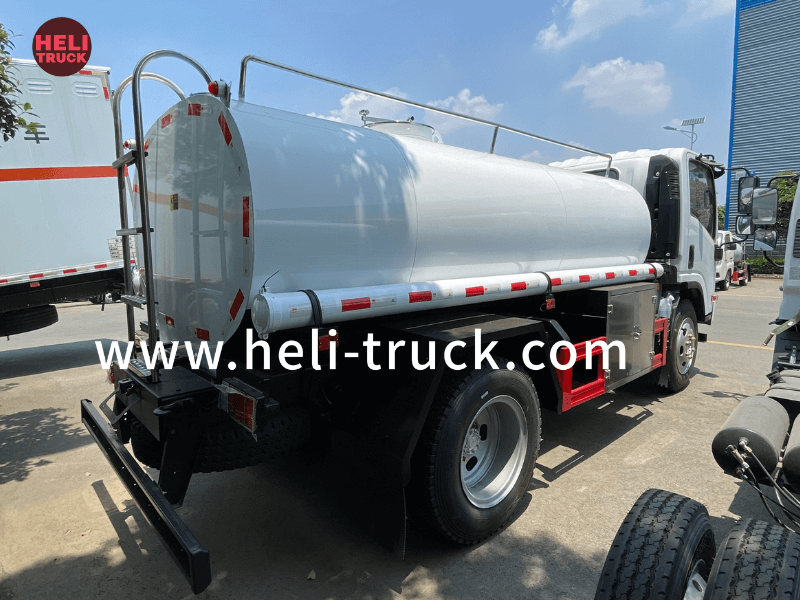Introduction
Garbage compactor trucks play a crucial role in waste management systems around the world. These specialized vehicles are designed to collect and compact large volumes of solid waste efficiently, helping to keep our cities clean and hygienic. In this comprehensive guide, we will explore the various specifications of garbage compactor trucks, including their size, capacity, power source, and other key features that make them essential tools in the waste management industry.
History of Garbage Compactor Trucks
Garbage compactor trucks have been in use for over a century, evolving from simple horse-drawn carts to the sophisticated vehicles we see on the streets today. The first mechanized garbage collection vehicles were introduced in the early 20th century, offering a more efficient and sanitary way to collect and transport waste. Over the years, advancements in technology and design have led to the development of highly specialized garbage compactor trucks that are capable of handling large volumes of waste with ease.
Types of Garbage Compactor Trucks
There are several types of garbage compactor trucks available on the market, each designed for specific waste management needs. The most common types include:
1. Rear Loader Compactor Trucks: These trucks are equipped with a compactor mechanism at the rear of the vehicle, allowing waste collectors to load trash from bins into the compactor for compression and storage.
2. Front Loader Compactor Trucks: Front loader compactor trucks feature a hydraulic lifting mechanism at the front of the vehicle, which is used to pick up large waste containers and dump the contents into the compactor.
3. Side Loader Compactor Trucks: Side loader compactor trucks are designed with a loading mechanism on the side of the vehicle, allowing waste collectors to pick up and empty bins without leaving the cab.
4. work truck : Stationary compactors are fixed machines that are installed at a specific location, such as a waste transfer station or recycling center. They are used to compress waste before it is transported to a landfill or recycling facility.
Specifications of Garbage Compactor Trucks
Garbage compactor trucks come in a variety of sizes and configurations to meet the diverse needs of waste management operations. Some of the key specifications to consider when choosing a garbage compactor truck include:
1. Size and Capacity: Garbage compactor trucks are available in various sizes, ranging from small vehicles with a capacity of a few cubic yards to large trucks that can hold tens of cubic yards of waste. The size and capacity of the truck will depend on the volume of waste to be collected and the frequency of collections.
2. Power Source: Garbage compactor trucks can be powered by diesel engines, electric motors, or hydraulic systems. Diesel-powered trucks are the most common choice due to their power and reliability, but electric and hydraulic models are becoming increasingly popular for their eco-friendly operation.
3. Compactor Mechanism: The compactor mechanism is the heart of a garbage compactor truck, responsible for compressing waste and maximizing storage capacity. Different trucks may feature different types of compactor mechanisms, such as rotary compactors, blade compactors, or auger compactors.
4. Loading Mechanism: The loading mechanism of a garbage compactor truck determines how waste is collected and deposited into the compactor. Rear loader trucks typically use a hydraulic arm to lift and empty bins, while front loader trucks use a lifting fork to pick up containers.

5. Safety Features: Garbage compactor trucks are equipped with various safety features to protect operators and ensure smooth operation. These may include backup cameras, warning lights, emergency stop buttons, and automatic shut-off systems.
6. Maintenance Requirements: Like any other vehicle, garbage compactor trucks require regular maintenance to ensure optimal performance and longevity. Maintenance tasks may include oil changes, filter replacements, hydraulic system checks, and compactor maintenance.
7. Environmental Considerations: In recent years, there has been a growing emphasis on environmental sustainability in waste management practices. Garbage compactor trucks with low emissions engines, energy-efficient designs, and recycling capabilities are increasingly sought after by municipalities and waste management companies.
Benefits of Garbage Compactor Trucks
Garbage compactor trucks offer a range of benefits for waste management operations, including:
1. Increased Efficiency: Garbage compactor trucks can collect and compact large volumes of waste in a single trip, reducing the number of collection rounds required and improving operational efficiency.
2. Reduced Labor Costs: By automating the waste collection process, garbage compactor trucks help reduce the need for manual labor and save on labor costs for waste management companies.
3. Improved Hygiene: Compacting waste in sealed containers helps minimize odors, leaks, and vermin infestations, improving overall hygiene and sanitation in urban areas.
4. Environmental Protection: Compact waste takes up less space in landfills, reducing the environmental impact of waste disposal and helping to conserve natural resources.
Conclusion
Garbage compactor trucks are essential tools in modern waste management systems, offering efficient and hygienic solutions for collecting and transporting solid waste. By understanding the specifications and features of these specialized vehicles, waste management companies can choose the right garbage compactor truck for their operational needs and contribute to a cleaner and more sustainable environment.
